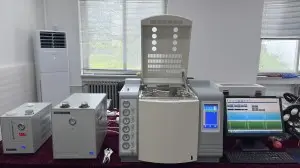Gas chromatography is a powerful analytical technique used in various industries to separate and analyze complex mixtures of volatile compounds. A gas chromatography analyzer, equipped with a gas chromatography kit, plays a crucial role in this process. From sample preparation to data analysis, we will guide you through the key aspects of successfully completing gas chromatography testing. Join us as we uncover the intricacies of this analytical technique and learn how to achieve accurate and reliable results.
Sample Preparation

Proper sample preparation is essential to ensure accurate and reproducible results in gas chromatography test. Here are some key steps to consider:
a. Sample Collection: Collect the sample using appropriate techniques, ensuring that it represents the target analytes accurately. Proper sampling techniques and containers are crucial to prevent contamination and preserve sample integrity.
b. Sample Extraction: Depending on the nature of the sample, extraction methods such as liquid-liquid extraction, solid-phase microextraction, or headspace sampling may be employed to isolate the analytes of interest.
c. Sample Cleanup: In some cases, samples may contain impurities or interfering substances that can affect the analysis. Sample cleanup techniques such as solid-phase extraction or derivatization may be employed to remove or modify these compounds for better separation and detection.
d. Sample Concentration: If the analytes are present in low concentrations, a concentration step may be necessary to increase the sensitivity of the analysis. Methods such as solvent evaporation or solid-phase microextraction can be utilized for sample concentration.
Gas Chromatography Analysis
Once the samples are prepared, the gas chromatography analyzer is employed to perform the analysis. Here are the key steps involved:
a. Column Selection: Choose the appropriate column based on the analytes of interest, their volatility, and the separation requirements. Columns with different stationary phases and dimensions are available to achieve optimal separation and resolution.
b. Injection: Introduce the prepared sample into the gas chromatography system using an injection technique suitable for the sample type and the required injection volume. Common injection methods include split, splitless, and on-column injections.
c. Oven Temperature Program: Set up a temperature program for the gas chromatography oven to optimize the separation of the analytes. The temperature ramping and holding times are carefully selected to achieve efficient separation and elution of the analytes.
d. Carrier Gas Selection: Choose an appropriate carrier gas, such as helium or nitrogen, based on the requirements of the analysis. The carrier gas carries the sample through the column and affects the efficiency and speed of the separation.
e. Detector Operation: Gas chromatography analyzers employ different detectors, such as flame ionization detectors (FID), thermal conductivity detectors (TCD), or mass spectrometry detectors (MSD). Select the appropriate detector and optimize its parameters for optimal sensitivity and selectivity.
f. Data Acquisition: The gas chromatography analyzer records the detector response as a function of time, generating a chromatogram. Ensure proper data acquisition settings, including integration parameters, peak identification, and baseline correction, for accurate and reliable results.
Data Analysis and Interpretation
After completing the gas chromatography analysis, the obtained data needs to be analyzed and interpreted. Here are some essential steps:
a. Peak Identification: Identify and label the peaks in the chromatogram corresponding to the analytes of interest. This can be done based on their retention times, comparison with reference standards, or using spectral libraries.
b. Quantification: Determine the concentrations of the analytes by comparing their peak areas or heights with those of calibration standards. Use appropriate calibration curves or internal standards for accurate quantification.
c. Data Validation: Perform data validation checks to ensure the reliability and accuracy of the results. Verify the quality of the chromatographic peaks, evaluate the system suitability, and assess the precision and accuracy of the method.
d. Reporting: Prepare a comprehensive report summarizing the gas chromatography analysis, including sample information, analytical parameters, results, and any relevant observations or conclusions. Ensure clear and concise documentation for future reference or regulatory compliance.